300 scholarly books by Brandeis University Press and 15
start with L
300 scholarly books by Brandeis University Press and 15
300 scholarly books by Brandeis University Press
15 start with L start with L
15 start with L start with L
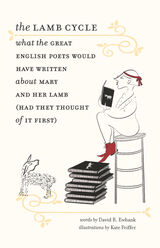
The Lamb Cycle
What the Great English Poets Would Have Written About Mary and Her Lamb (Had They Thought of It First)
David R. Ewbank
Brandeis University Press, 2023
The rhyme “Mary Had a Little Lamb” told in the style—and substance—of the great English poets from Edmund Spenser to Stevie Smith.
In The Lamb Cycle, David R. Ewbank achieves the unthinkable—he writes so convincingly in the style of the great English poets that one could be lulled into thinking that Shakespeare himself was inspired to muse upon the subject of “Mary Had a Little Lamb.” Ewbank captures not only the style of each of the poets he chooses, but also their preoccupations and subject matter. So D.H. Lawrence’s Mary longs for her lamb as any woman longing for her lover, whilst T.S. Eliot’s Mary is recollected by an old man looking back on his life. Alexander Pope writes an “An Essay on Lambs,” and Tennyson’s lotus eaters become “The Clover Eater.” Brilliantly written, sophisticated, and laugh-out-loud funny, these poems, enhanced by Kate Feiffer’s charming illustrations, will enchant anyone who has ever read an English poem.
In The Lamb Cycle, David R. Ewbank achieves the unthinkable—he writes so convincingly in the style of the great English poets that one could be lulled into thinking that Shakespeare himself was inspired to muse upon the subject of “Mary Had a Little Lamb.” Ewbank captures not only the style of each of the poets he chooses, but also their preoccupations and subject matter. So D.H. Lawrence’s Mary longs for her lamb as any woman longing for her lover, whilst T.S. Eliot’s Mary is recollected by an old man looking back on his life. Alexander Pope writes an “An Essay on Lambs,” and Tennyson’s lotus eaters become “The Clover Eater.” Brilliantly written, sophisticated, and laugh-out-loud funny, these poems, enhanced by Kate Feiffer’s charming illustrations, will enchant anyone who has ever read an English poem.
[more]
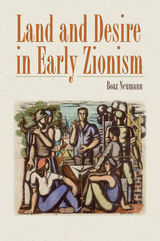
Land and Desire in Early Zionism
Boaz Neumann
Brandeis University Press, 2011
This innovative study examines the responses of early-twentieth-century pioneers to “the Land” of Palestine. Early Zionist historiography portrayed these young settlers as heroic; later, more critical studies by the “new” historians and sociologists focused on their failures and shortcomings. Neumann argues for something else that historians have yet to identify—desire. Desire for the Land and a visceral identification with it begin to explain the pioneer experience and its impact on Israeli history and collective memory, as well as on Israelis’ abiding connection to the Land of Israel. His close readings of archival documents, memoirs, diaries, poetry, and prose of the period develop new understandings—many of them utterly surprising—of the Zionist enterprise. For Neumann, the Zionist revolution was an existential revolution: for the pioneers, to be in the Land of Israel was to be!
[more]
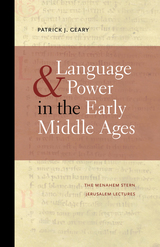
Language and Power in the Early Middle Ages
Patrick J. Geary
Brandeis University Press, 2013
The eminent historian Patrick J. Geary has written a provocative book, based on lectures delivered at the Historical Society of Israel about the role of language and ideology in the study and history of the early Middle Ages. He includes a fascinating discussion of the rush by nationalist philologists to rediscover the medieval roots of their respective vernaculars, the rivalry between vernacular languages and Latin to act as transmitters of Christian sacred texts and administrative documents, and the rather sloppy and ad hoc emergence in different places of the vernacular as the local administrative idiom. This is a fascinating look at the weakness of language as a force for unity: ideology, church authority, and emerging secular power always trumped language.
[more]
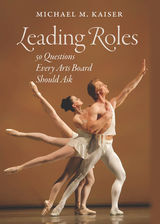
Leading Roles
50 Questions Every Arts Board Should Ask
Michael M. Kaiser
Brandeis University Press, 2010
Not-for-profit arts organizations struggled to survive the recent economic recession. In this increasingly hardscrabble environment, it is absolutely imperative that the boards of these organizations function as energetically, creatively, and efficiently as possible. Michael M. Kaiser’s personal history with boards of arts organizations began when he served on the board of the Washington Opera (now the Washington National Opera) in 1983. Today, in his capacity as president of the John F. Kennedy Center for the Performing Arts, Kaiser recently completed a 50-state, 69-city Arts in Crisis tour. Board issues came up repeatedly as central to the success or failure of the organization. Drawing on these and many other conversations, nationally and internationally, Kaiser’s book offers members of boards and staffs the information they need to create the healthy atmosphere necessary to thriving arts organizations. Organized in a clear, readable, question-and-answer format, Leading Roles covers every aspect of board participation in the life of the organization, including mission and governance; fundraising and marketing responsibilities; the relationship of the board to the artistic director, executive director, and staff; and its responsibilities for planning and budgeting. Kaiser addresses boards in crisis, international boards, and boards of arts organizations of color. Throughout, he emphasizes the importance of transparency and clarity in the board’s dealings with its own members and those of the arts community of which it is a part, showing how anything less results in contentiousness that can immobilize an arts organization, or even tear it apart.
[more]
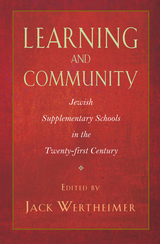
Learning and Community
Jewish Supplementary Schools in the Twenty-First Century
Jack Wertheimer
Brandeis University Press, 2009
At a time of heightened interest in Jewish supplementary schooling, this volume offers a path-breaking examination of how ten diverse schools have remade themselves to face the new challenges of the twenty-first century. Each written by an academic observer with the help of an experienced educator, the chapters bring these schools vividly to life by giving voice to students, parents, teachers, school directors, lay leaders, local rabbis and other key participants. The goal of the book is to uncover the building blocks each school put into place to improve its delivery of a Jewish education. Employing qualitative research, Learning and Community is filled with moving and inspiring human-interest stories. Collectively, these portraits offer models of how schools of different sizes and configurations can maximize their impact, and in the process revitalize the form of religious and cultural education that engages the majority of Jewish children in the United States.
[more]
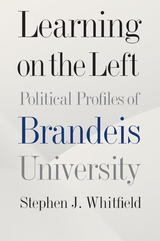
Learning on the Left
Political Profiles of Brandeis University
Stephen J. Whitfield
Brandeis University Press, 2020
Brandeis University is the United States’ only Jewish-sponsored nonsectarian university, and while only being established after World War II, it has risen to become one of the most respected universities in the nation. The faculty and alumni of the university have made exceptional contributions to myriad disciplines, but they have played a surprising formidable role in American politics.
Stephen J. Whitfield makes the case for the pertinence of Brandeis University in understanding the vicissitudes of American liberalism since the mid-twentieth century. Founded to serve as a refuge for qualified professors and students haunted by academic antisemitism, Brandeis University attracted those who generally envisioned the republic as worthy of betterment. Whether as liberals or as radicals, figures associated with the university typically adopted a critical stance toward American society and sometimes acted upon their reformist or militant beliefs. This volume is not an institutional history, but instead shows how one university, over the course of seven decades, employed and taught remarkable men and women who belong in our accounts of the evolution of American politics, especially on the left. In vivid prose, Whitfield invites readers to appreciate a singular case of the linkage of political influence with the fate of a particular university in modern America.
Stephen J. Whitfield makes the case for the pertinence of Brandeis University in understanding the vicissitudes of American liberalism since the mid-twentieth century. Founded to serve as a refuge for qualified professors and students haunted by academic antisemitism, Brandeis University attracted those who generally envisioned the republic as worthy of betterment. Whether as liberals or as radicals, figures associated with the university typically adopted a critical stance toward American society and sometimes acted upon their reformist or militant beliefs. This volume is not an institutional history, but instead shows how one university, over the course of seven decades, employed and taught remarkable men and women who belong in our accounts of the evolution of American politics, especially on the left. In vivid prose, Whitfield invites readers to appreciate a singular case of the linkage of political influence with the fate of a particular university in modern America.
[more]
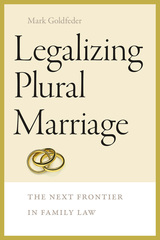
Legalizing Plural Marriage
The Next Frontier in Family Law
Mark Goldfeder
Brandeis University Press, 2017
Polygamous marriages are currently recognized in nearly fifty countries worldwide. Although polygamy is technically illegal in the United States, it is practiced by members of some religious communities and a growing number of other “poly” groups. In the radically changing and increasingly multicultural world in which we live, the time has come to define polygamous marriage and address its legal feasibilities. Although Mark Goldfeder does not argue the right or wrong of plural marriage, he maintains that polygamy is the next step—after same-sex marriage—in the development of U.S. family law. Providing a road map to show how such legalization could be handled, he explores the legislative and administrative arguments which demonstrate that plural marriage is not as farfetched—or as far off—as we might think. Goldfeder argues not only that polygamy is in keeping with the legislative values and freedoms of the United States, but also that it would not be difficult to manage or administrate within our current legal system. His legal analysis is enriched throughout with examples of plural marriage in diverse cultural and historical contexts. Tackling the issue of polygamy in the United States from a legal perspective, this book will engage anyone interested in constitutional law, family law, or criminal law, along with sociologists and those who study gender and culture in modern times.
[more]
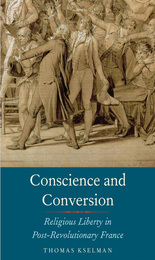
The Legend of the Wandering Jew
George K. Anderson
Brandeis University Press, 1991
When Christ, wearied by the heavy burden of the cross, leaned for a moment against a stranger’s doorway, the stranger drove him away and cried, “Walk faster!” To this, Christ replied, “I go, but you will walk until I come again!” So began the legend of the Wandering Jew, which has recurred in many forms of literature and folklore ever since. George K. Anderson, in a book first published in 1965 and immediately hailed as a classic, traces this enduring legend through the ages, from St. John through the Middle Ages to Shelley, Eugène Sue, and the antisemitism of Hitler to recent movies and novels. Though the main elements of the legend are a constant, Anderson shows how changes in emphasis and meaning reflect civilization’s shifting concerns and attitudes over time.
[more]
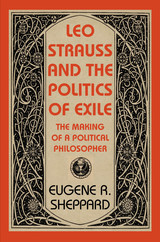
Leo Strauss and the Politics of Exile
The Making of a Political Philosopher
Eugene Sheppard
Brandeis University Press, 2007
Born in rural Hesse, Germany, Leo Strauss (1899–1973) became an active Zionist and philosopher during the tumultuous and fractious Weimar Republic. As Eugene R. Sheppard demonstrates in this groundbreaking and engaging book, Strauss gravitated towards such thinkers as Franz Rosenzweig, Martin Heidegger, and Carl Schmitt as he sought to identify and overcome fundamental philosophical, political, and theological crises. The rise of Nazism impelled Strauss as a young Jewish émigré, first in Europe and then in America, to grapple with—and accommodate his thought to—the pressing challenges of exile. In confronting his own state of exile, Strauss enlisted premodern Jewish thinkers such as Moses Maimonides and Baruch Spinoza who earlier addressed the problem of reconciling their competing loyalties as philosophers and Jews. This is the first study to frame Strauss’s political philosophy around his critique of liberalism and the problem of exile. Sheppard follows Strauss from Europe to the United States, a journey of a conservative Weimar Jew struggling with modern liberalism and the existential and political contours of exile. Strauss sought to resolve the conflicts of a Jew unwilling to surrender loyalty to his ancestral community and equally unwilling to adhere to the strictures of orthodox observance. Strauss saw truth and wisdom as transcending particular religious and national communities, as well as the modern enlightened humanism in which he himself had been nurtured. In his efforts to navigate between the Jewish and the philosophical, the ancient and the modern, Berlin and New York, Strauss developed a distinctively programmatic way of reading and writing “between the lines.” Sheppard recaptures the complexity and intrigue of this project which has been ignored by those who both reject and claim Strauss’s legacy.
[more]
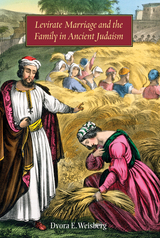
Levirate Marriage and the Family in Ancient Judaism
Dvora E. Weisberg
Brandeis University Press, 2009
In this study, Weisberg uses levirate marriage (an institution that involves the union of a man and the widow of his childless brother) as described in biblical law and explicated in rabbinic Judaism as a lens to examine the status of women and attitudes toward marriage, sexuality, and reproduction in early Jewish society. While marriage generally marks the beginning of a new family unit, levirate comes into play when a family’s life is cut short. As such, it offers an opportunity to study the family at a moment of breakdown and restructuring. With her discussion rooted in rabbinic sources and commentary, Weisberg explores kinship structure and descent, the relationship between a family unit created through levirate marriage and the extended family, and the roles of individuals within the family. She also considers the position of women, asking whether it is through marriage or the bearing of children that a woman becomes part of her husband’s family, and to what degree a married woman remains part of her natal family. She argues that rabbinic responses to levirate suggest that a family is an evolving entity, one that can preserve itself through realignment and redefinition.
[more]
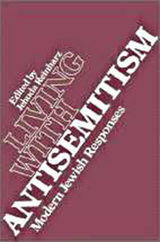
Living with Antisemitism
Modern Jewish Responses
Jehuda Reinharz
Brandeis University Press, 1988
A collection of 22 essays by distinguished scholars on the Jewish response to antisemitism worldwide over the past 200 years.
[more]
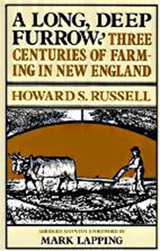
A Long, Deep Furrow
Three Centuries of Farming in New England
Howard S. Russell
Brandeis University Press, 1982
A selection of the History Book Club.
[more]
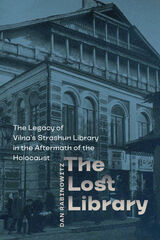
The Lost Library
The Legacy of Vilna's Strashun Library in the Aftermath of the Holocaust
Dan Rabinowitz
Brandeis University Press, 2018
The Strashun Library was among the most important Jewish public institutions in Vilna, and indeed in Eastern Europe, prior to its destruction during World War II. Mattityahu Strashun, descended from a long and distinguished line of rabbis, bequeathed his extensive personal library of 5,753 volumes to the Vilna Jewish community on his death in 1885, with instructions that it remain open to all. In the summer of 1941, the Nazis came to Vilna, plundered the library, and shipped many of its books to Germany for deposition at a future Institute for Research into the Jewish Question. When the war ended, the recovery effort began. Against all odds, a number of the greatest treasures of the library could be traced. However, owing to its diverse holdings and its many prewar patrons, a custody battle erupted over the remaining holdings. Who should be heir to the Strashun Library? This book tells the story of the Strashun Library from its creation through the contentious battle for ownership following the war until present day. Pursuant to a settlement in 1958, the remnants of the greatest prewar library in Europe were split between two major institutions: the secular YIVO in the United States and the rabbinic library of Hechal Shlomo in Israel, a compromise that struck at the heart of the library’s original unifying mission.
[more]
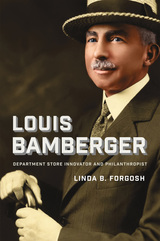
Louis Bamberger
Department Store Innovator and Philanthropist
Linda B. Forgosh
Brandeis University Press, 2016
Louis Bamberger (1855–1944) was the epitome of the merchant prince as public benefactor. Born in Baltimore, this son of German immigrants built his business—the great, glamorous L. Bamberger & Co. department store in Newark, N.J.—into the sixth-largest department store in the country. A multimillionaire by middle age, he joined the elite circle of German Jews who owned Macy’s, Bloomingdale’s, and Filene’s. Despite his vast wealth and local prominence, Bamberger was a reclusive figure who shunned the limelight, left no business records, and kept no diaries. He remained a bachelor and kept his private life and the rationale for his business decisions to himself. Yet his achievements are manifold. He was a merchandising genius whose innovations, including newspaper and radio ads and brilliant use of window and in-store displays, established the culture of consumption in twentieth-century America. His generous giving, both within the Jewish community and beyond it, created institutions that still stand today: the Newark YM-YWHA, Beth Israel Hospital, and the Newark Museum. Toward the end of his career, he financed and directed the creation of the Institute for Advanced Study at Princeton, which led to a friendship with Albert Einstein. Despite his significance as business innovator and philanthropist, historians of the great department stores have paid scant attention to Bamberger. This full-length biography will interest historians as well as general readers of Jewish history nationally, New Jerseyans fascinated by local history, and the Newarkers for whom Bamberger’s was a beloved local institution.
[more]
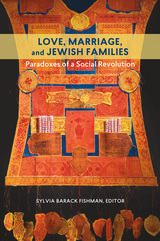
Love, Marriage, and Jewish Families
Paradoxes of a Social Revolution
Edited by Sylvia Barack Fishman
Brandeis University Press, 2015
The concepts of gender, love, and family—as well as the personal choices regarding gender-role construction, sexual and romantic liaisons, and family formation—have become more fluid under a society-wide softening of boundaries, hierarchies, and protocols. Sylvia Barack Fishman gathers the work of social historians and legal scholars who study transformations in the intimate realms of partnering and family construction among Jews. Following a substantive introduction, the volume casts a broad net. Chapters explore the current situation in both the United States and Israel, attending to what once were considered unconventional household arrangements—including extended singlehood, cohabitating couples, single Jewish mothers, and GLBTQ families—along with the legal ramifications and religious backlash. Together, these essays demonstrate how changes in the understanding of male and female roles and expectations over the past few decades have contributed to a social revolution with profound—and paradoxical—effects on partnering, marriage, and family formation. This diverse anthology—with chapters focusing on demography, ethnography, and legal texts—will interest scholars and students in Jewish studies, women’s and gender studies, Israel studies, and American Jewish history, sociology, and culture.
[more]
READERS
Browse our collection.
PUBLISHERS
See BiblioVault's publisher services.
STUDENT SERVICES
Files for college accessibility offices.
UChicago Accessibility Resources
home | accessibility | search | about | contact us
BiblioVault ® 2001 - 2024
The University of Chicago Press









